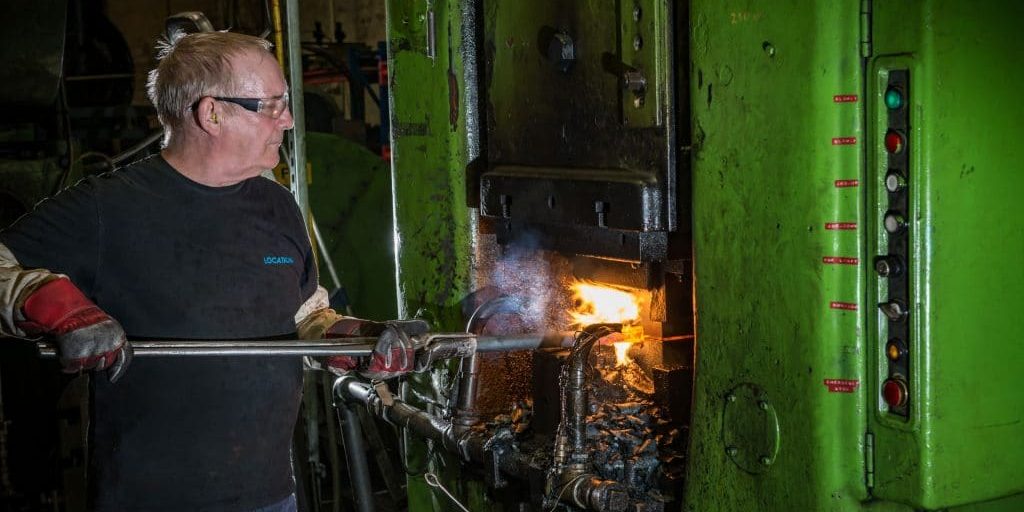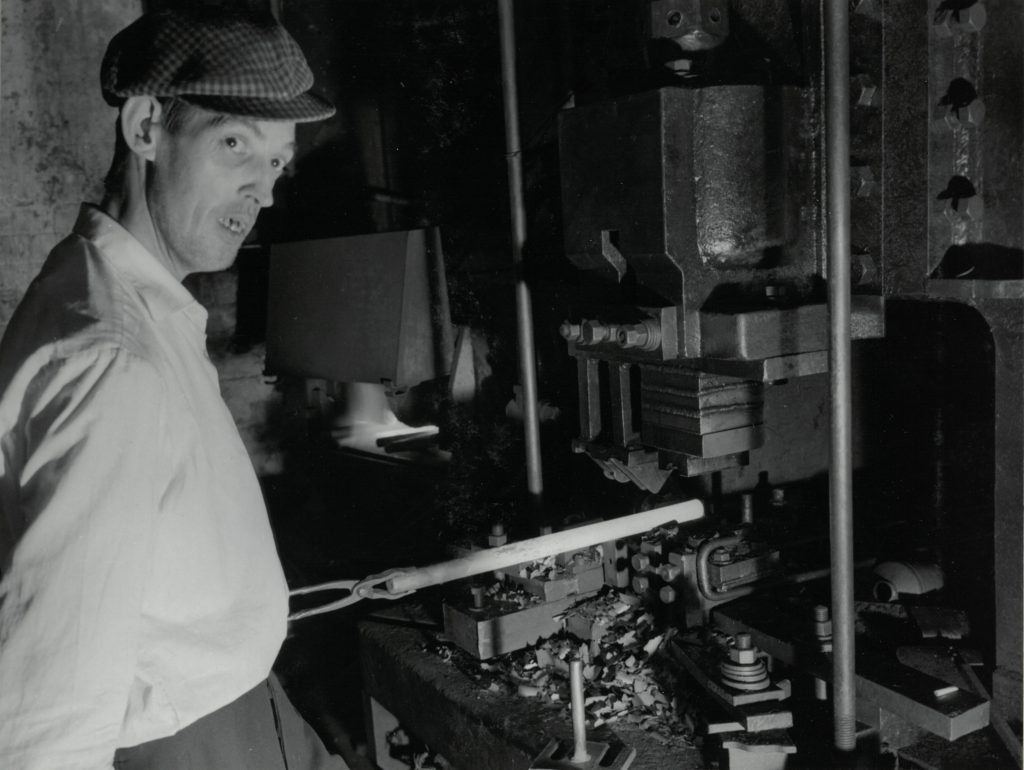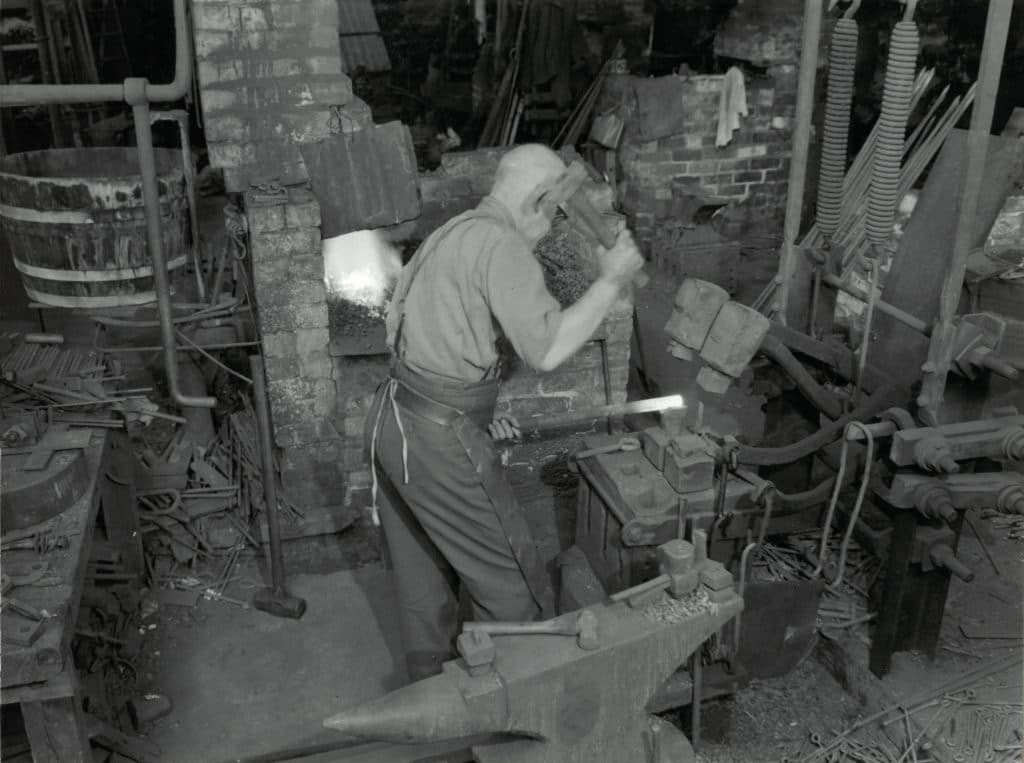What is Forging?
The forging process involves re-shaping material into a pre-determined design by pressing a pre-heated material into a tool or die so that the material disperses and as the material cools, re-solidifies into the shape of the mould. The main advantage of hot forging as a production process is that it produces a stronger piece of steel compared to alternative measures such as casting. It is one of the world’s oldest known metalwork processes dating back to at least 4000 BC to produce hand tools and weapons.
There are many different types of hot forging, including:
Find out more about forging with B.B. Price.

Drop forging
Drop forging is achieved by compressing pre-heated material between two dies. Typically, the top down is forced down by a highly forceful press which causes the heated material to disperse and ultimately fit the shape of the die.
As it cools, the material regains its rigidity providing increased strength to the re-formed shape.
As the name suggests, hand forgings are performed by skilled workers by hand. Often, low value, bespoke products can be produced more cost effectively using hand forging due to the high set up costs of the other methods which usually require bespoke dies to be made before production commences. Hand forging may cover a variety of processes but includes bending a heated bar into shape by manually forcing it around a generic pole or mould to re-shape the material.
Upset forging is achieved by positioning a preheated bar into a groove to hold it in place. Pressure is then applied, forcing the end of the bar into a die to reform it into the shape of the mould.
History of Forging
The trade of forging is known to date back to at least 4000BC, some scientists argue it even pre-dates 4500BC. This ages the forging process at over 6,000 years old! It’s fair to say that production processes have changed quite significantly over that time but the basic principles of the process largely remain the same.
In the early ages of mankind, fire was often feared due to its destructive powers and the devastation that can be caused if it is not controlled properly. Once techniques had developed techniques to tame fire, the benefits of it could be utilised. The earliest uses of fire were to provide warmth, cook and scare away animals to reduce the risk of attack.
Over time, mindsets towards fire changed from a thing to be fearful of towards a useful resource and subsequently early humans became more experimental of its use. They found that metals such as gold, silver and copper could be reshaped using the heat provided from small wood fuelled fires and heated rocks to heat the metals. This discovery in the land of Mesopotamia (between the Tigris and Euphrates) gave birth to the forging process.
As the use of water generated power increased in the 12th century, the capacity of forging operations significantly grew both in terms of the quantity that could be produced and also the size of metals that could be forged. This was a direct result of innovations in machinery which saw water powered mechanical hammers and bellows lead to major efficiency gains across the industry.
The most significant change came in the 19th century as steam engines grew in popularity during the industrial revolution. The ability to harness electrical power meant that forging technology was no longer restricted to river locations for power. Open die and hand forging methods used during the early-19th century were instead replaced by powerful steam hammers and air hammers which are still commonly used today.
The first recorded metal to be forged was gold. After the gold was heated, a stone was used as a makeshift forging hammer to bash it into its new shape. This process of heating the metal and bashing it with an implement by hand continued for many thousands of years until other power sources were established.
Following the industrial revolution, World War II had major impacts on the forging industry. Demand for forged products drastically increased as the requirements for weapons surged throughout the war years. This paved the way for improvements in press equipment as it became apparent that investment in production techniques was required to keep up with demand.
The second half of the 20th century saw the growth of electrical induction heaters, leading to yet further greater production levels and enhanced dimension control of forged components.
Today, technological developments have led to the possibility of using computer-controlled hydraulic hammers as part of the forging process. Further investment in the industry is likely to focus on finding faults in production with computerised feedback loops being used to detect and prevent production problems before large quantities are produced that may require scrapping.
Locate your blacksmith near me or discover more about forging and the industry with B.B. Price today. As forging specialists, we are able to provide you with the best forged products in The Black Country, at a competitive rate. We understand that your deadlines are important, and that is why every project is handled with care. Find the right steel forging near me today and get in touch with B.B. Price.
We are based in the Heart of The Black Country, the home of forging. With such a central location, we are able to supply all local areas, as well as UK-wide.
Locations we supply across the West Midlands: Birmingham | Cradley Heath | Halesowen | Dudley



